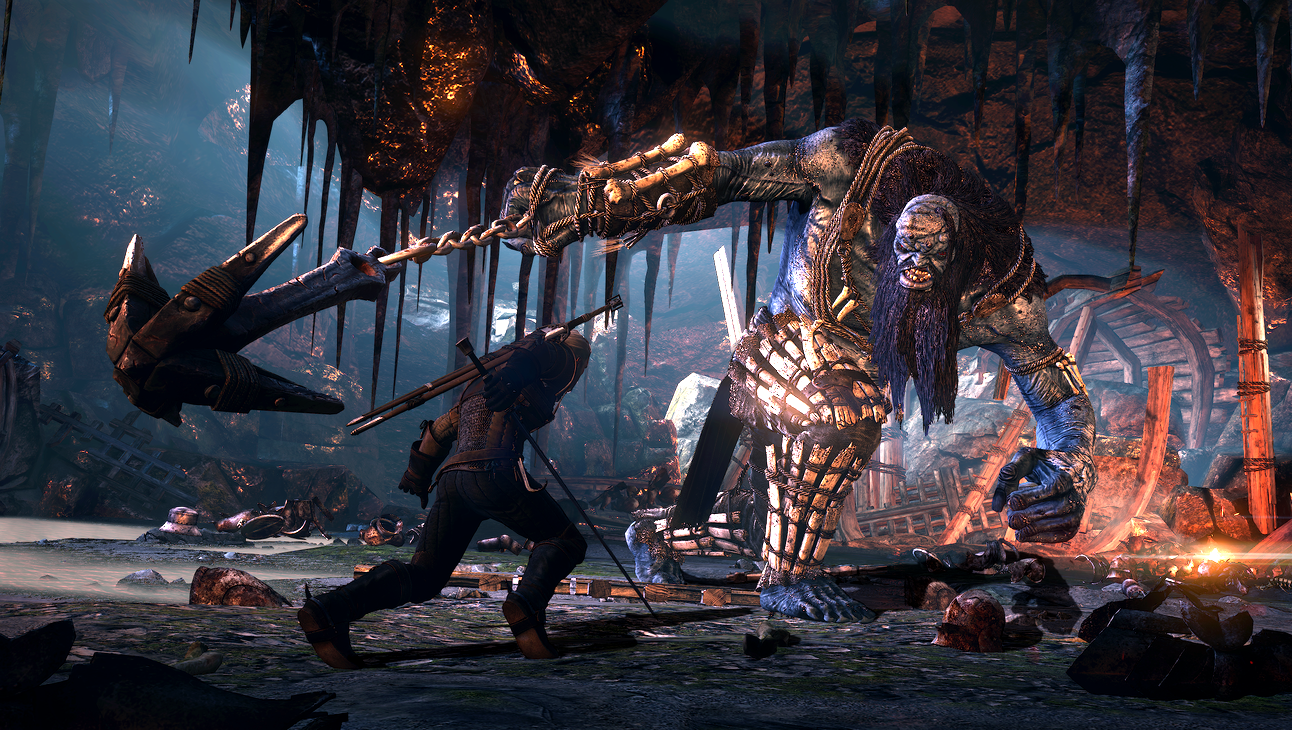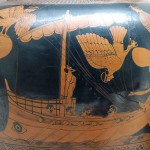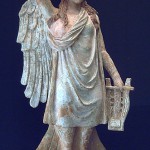The games series The Witcher and particularly its third opus, logically named the Witcher 3, has gotten some attention lately for its perceived lack of racial diversity in the design of its characters, which is racist and this game literally implies that people of color are not human :
It should be mentioned that The Witcher 3 deals with « racism, » but other « races » literally refers to different species: Elves, dwarves and other non-humans face bigotry.
Indeed, it shows again that humans are white humans and everyone else is non-human and oppressed. I’m not against racism being depicted; the game actually portrays racism and bigotry as bad. But even elves have the opportunity to exist. People of color don’t.
Again: This is literal dehumanizing of people of color. We are relegated to non-human species, whose treatment is supposed to mimic real-world racist policies. This sci-fi/fantasy trope of dealing with racism by showing inter-species treatment could work — if all the humans weren’t white.
If anything, making us short, bearded white Scottish men, or very white, pointy-eared thin people reinforces how dismissed we are — by not even being considered human.
Some people were eager to respond that given the fact that the game was set in a wilfully slavic setting, a wilfully slavic mythology, you should expect slavic people to play the part. Doing otherwise would be PC gone mad and imposing american standards of representativity to cultures that have also been marginalized which is also racist. An easy answer would be that given the Witcher 3 has sold 4 million copies in two weeks, its public largely exceeds Poland, and the game should be expected to be judged by different standards.
Some other people responded that if the Witcher 3 was set in slavic mythology and folklore, it was beyond their ability to distinguish it from a standard fantasy setting, given that most creatures that appear in the game are recurring characters in most of western fantasy. The invocation of a slavic essence in those games would just be a poor excuse to disrupt a needed conversation about race and representation, to keep fantasy white.
On Twitter, WordMercenary offers a helpful list if you ever have to debate this:
For the next time some shitty egg tells you « The Witcher series is based on Polish mythology » pic.twitter.com/Xa9PgaKrXT
— Tom Hatfield (@WordMercenary) July 26, 2015
What does it mean? What is it implying? That neither of those creatures exist in slavic mythology and folklore and have simply been tacked on this universe without regards for their origins?
Does this imply that polish mythology is lame because it resembles or borrows from other mythologies, so fuck polish mythology? I don’t think so.
Some of these creatures are shared accross different regions, like Scandinavia, Germany and Slavic countries. And yes Slavs do borrow from other cultures (like everybody) for example the Sudice do look a lot like the Moire from greek mythology.
But does this mean that you have to invent every single thing in your folklore for it to be considered TRUE folklore ?
A few things are off. For starters, Iftir are a subspecies of Djinn, although they are often distinguished, as are ghouls. (the Quran accounts for roughly three kinds of intelligent-humanlike beings : men, made from mud, angels made of light and djinn, made of fire. So, many creatures are interpreted as djinns as a general term)
Then, the siren is of greek origin, at least the name (Σειρήν). But in ancient greek culture, it’s a half-woman half-bird creature that is luring sailors out of their path.
It’s only from the european middle ages onward that its half-fish half-woman form starts to appear in Scandinavia. It seems, for the purpose of this tweet, it doesn’t change much : they borrowed from scandinavian/west european folklore, therefore outside of slavic folklore. Furthermore, the Witcher appears to merge the fish aspect (tail, kinda) with the bird aspect (wings) :
But the fact is Greeks are not the only one to come up with creepy womanly creatures luring men out of their path. For example, take the polish Rusalki, very often translated as «mermaid»
Of course there are differences of cosmology (they are not mythical beings given wings in the quest for Persephone like told in Ovid, Met. V.551 but are undead souls, born of violent deaths, vengeful spirits) setting (the sea vs. swamps, rivers) and lore, but when you translate it, you say «mermaid» and most of the «luring men to their death» trope is understood by the reader, whereas Rusalka wouldn’t ring a bell. (accounts of Nawki also seem very similar)
In this vein, Odmience are changelings, Vilas are wind spirits akin to nymphs, Strzyga share a few things with vampires or ghouls, Karzełek/Skarbnik are Dwarfs, and like previously said Rusalka/Nawki look like mermaids.
Sirens/mermaids are the trope namer, here, reuniting under this semantic umbrella varying creatures. Of course we can discuss this tendency to name things according to the closest mythology that is familiar to a western audience. I think it’s wrong to just categorize any spirit as a ghost or any creature draining life/power as a vampire. But I think it would be wrong to think that because something is a trope namer, it’s also the origin of the trope.
WordMercenary’s tweet lists the Golem as a creature of Jewish medieval folklore, which it certainly is. But an animate being made to obey order and created from mineral matter? Homer mentions (Iliad 18.422) that Hephaistos is served by golden automatons :
The bellows he set away from the fire, and gathered all the tools wherewith he wrought into a silver chest; and with a sponge wiped he his face and his two hands withal, [415] and his mighty neck and shaggy breast, and put upon him a tunic, and grasped a stout staff, and went forth halting; but there moved swiftly to support their lord handmaidens wrought of gold in the semblance of living maids. In them is understanding in their hearts, and in them speech [420] and strength, and they know cunning handiwork by gift of the immortal gods. These busily moved to support their lord
Some people tell that zombies are cultural appropriation given it comes from haitian folklore and was heavily linked to the history of slavery, but many features of the zombie can be found in accounts of the scandinavia draugar, or in some other types of undead. (often not as clear cut as in modern classifications)
If you think of the wish-fulfilling powerful Djinn, à la Aladdin, many fairies, leprechauns and whatnot can do the job, although they won’t have that much to do with the quranic djinns, powerful beings who, like humanity, have the free will to submit or not to islam and to whom a few surahs are addressed.
In those three cases, an exotic-sounding name (Djinn, Zombie, Golem) is given to an entire type of monsters that might have even existed in western mainstream folklore beforehand but didn’t have a proper general name. Folklorists might kill me for making such generalizing statements but I think it is mainly a modern phenomena in which modern fantasy/horror authors try to purify typologies that were very messy before. Most of those creatures seem invented to explain different forms of diseases and bad luck : why do children get lost in corn fields, why do sailors tend to get lost at sea, why do people get heatstrokes while working in the field. Some play on different fears : fear of the dead (undead, ghosts), fear of the wilds (beasts), fear of impostors (changelings). They can be really redundant. Most Draugar share traits with Vampires, Ghouls or whatnot. And more often than not the nature of the creature is unclear : is it corporeal? Is it a ghost, a spiritual being?
But if you take a modern TV show (yes as opposed to medieval TV show) like Supernatural, you’ll find that each monster is a very different species (although they can be related) and have very different ways of being dealt with, despite a lot of unhelpful folklore.
Sometimes, the Winchester even joke about the discrepancy of the lore :
John: Most vampire lore is crap. A cross won’t repel them, sunlight won’t kill them, and neither will a stake to the heart. But the bloodlust, that part’s true. They need fresh human blood to survive. They were once people, so you won’t know it’s a vampire until it’s too late. (1×20 « Dead Man’s Blood »)
DEAN : You’re telling me there’s no lore on how to smoke ’em.
SAM : No, Dean, I’m telling you there’s too much. I mean, there’s a hundred different legends on the walking dead, but they all have different methods for killing them. Some say — setting them on fire, uh, one said, where is it? Right here. Feeding their hearts to wild dogs. That’s my personal favorite. I mean, who knows what’s real and what’s myth?
DEAN : Is there anything they all have in common?
SAM : No. But a few said silver might work. (2×4 « Children Should’nt Play With Dead Things »)
SAM : Dean, there’s ten times as much lore about angels as there is about anything else we’ve ever hunted.
DEAN : Yeah, you know what? There’s a ton of lore on unicorns too. In fact, I hear that they, they ride on silver moonbeams, and they shoot rainbows out of their ass. (2×13 « Houses of the Holy »)
In a way that looks a lot like Terry Pratchett in Carpe Jugulum :
‘I didn’t mean you, I meant- Look, you said you’ve studied vampires, didn’t you? What’s good for vampires?’
Oats thought for a moment. ‘Er… a nice dry coffin, er, plenty of fresh blood, er, overcast skies…’ His voice trailed off when he saw her expression. ‘Ah… well, it depends exactly where they’re from, I remember. Uberwald is a very big place. Er, cutting off the head and staking them in the heart is generally efficacious.’
‘But that works on everyone,’ said Nanny.
‘Er… in Splintz they die if you put a coin in their mouth and cut their head off…’
‘Not like ordinary people, then,’ said Nanny, taking out a notebook.
‘Er… in Klotz they die if you stick a lemon in their mouth-‘
‘Sounds more like it.’
‘-after you cut their head off. I believe that in Glitz you have to fill their mouth with salt, hammer a carrot into both ears, and then cut off their head.’
‘I can see it must’ve been fun finding that out.’
‘And in the valley of the Ah they believe it’s best to cut off the head and boil it in vinegar.’
‘You’re going to need someone to carry all this stuff, Agnes,’ said Nanny Ogg.
‘But in Kashncari they say you should cut off their toes and drive a nail through their neck.’
‘And cut their head off?’
‘Apparently you don’t have to.’
‘Toes is easy,’ said Nanny. ‘Old Windrow over in Bad Ass cut off two of his with a spade and he weren’t even trying.’
‘And then, of course, you can defeat them by stealing their left sock,’ said Oats.
‘Sorry?’ said Agnes. ‘I think I misheard you there.’
‘Um, they’re pathologically meticulous, you see. Some of the gypsy tribes in Borogravia say that if you steal their sock and hide it somewhere they’ll spend the rest of eternity looking for it. They can’t abide things to be out of place or missing.’
‘I wouldn’t have put this down as a very widespread belief,’ said Nanny.
‘Oh, they say in some villages that you can even slow them down by throwing poppyseed at them,’ said Oats. ‘Then they’ll have a terrible urge to count every seed. Vampires are very analretentive, you see?’
This comes from the main assumption of Supernatural : monsters exist. Different people react differently and name them differently, but they are the same creature behind all the legends. It seems The Witcher Series makes the same assumption.
SAM : Cultures all over the world believe that eating human flesh gives a person certain abilities. Speed, strength, immortality. (1×2 « Wendigo »)
SAM : So, every religion in every world culture has the concept of demons and demonic possession, right? I mean Christian, Native American, Hindu, you name it. (1×4 « Phantom Traveler »)
SAM: Shapeshifter? (DEAN shrugs.) Something that can make itself look like anyone?
DEAN: Every culture in the world has a shapeshifter lore. You know, legends of creatures who can transform themselves into animals or other men.
SAM: Right, skinwalkers, werewolves. (1×6 « Skin »)
SAM: You really think it’s THE Grim Reaper? Like, angel of death, collect your soul, the whole deal?
DEAN : No no no, not THE reaper, A reaper. There’s reaper law in pretty much every culture on earth, it goes by 100 different names, it’s possible that there’s more than one of them. (1×12 « Reaper »)
This aspect of Supernatural is a mixed bag. In a way they’re right : many cultures accross the world tell similar tales that have similar functions. On the other hand, they often erase particularities of alien cultures in their attempts to represent them (is hindu possession really akin to the christian one? Is this evil clown really like indigenous accounts of rakshasas?).
And I think, the Winchester echo a real tendecy among storytellers : the need to distinguish monsters. Is it a ghost story or an undead story? Which undead? Is it a vampire? Although ambiguous and undescript monsters do have some fans, the making of the modern horror/fantasy settings implied creating preciste typologies and mecanisms : how do this creature work – although every incarnation of a creature had particularities and in recent decades often made fun of the discarded lore along the way.
So what is this list trying to imply?
That we shouldn’t name every type of folkloric creature according to one that vaguely resemble? Why not, but it’s not a tendency initiated by the Witcher and frankly seem innocuous.
Maybe it’s just a cheap shot («borrowed mythologies!») at another cheaper shot («it’s polish so fuck non-white people»).





Répondre à Crescent Moons for the Crescent Moon Throne Annuler la réponse